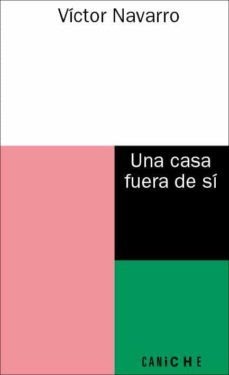
Original language: castellano
Year of publication: 2022
Valuation: Very interesting
I’ll start at the end: I really liked this little book. Sometimes it is comforting to read professionals from a certain sector unrelated to our work or more marked hobbies; it serves to open our minds to realities about which we know almost nothing and to value points of view that we surely had not noticed. This time it is a book related to architecture (be careful, Beatriz, you might like this), specifically with the construction of the Gehry House, the home of the Canadian architect himself, so famous today, when he was for almost the entire world. a perfect stranger.
Gehry and his wife had decided to move to Santa Monica, and it was she, the wife, who located a house that she considered ideal, a mansion without a very defined style, something rather nondescript and similar to the neighbors’ homes. For the young architect (see the photo with the mustache) the choice must have been either a shock due to the vulgarity of the construction, or perhaps a rush thinking about what he could do to apply his ideas on that building. Because the maintenance of the old house, the chosen one, had to be a non-negotiable condition. So Gehry started thinking about how to improve that.

The solution, apparently Solomonic, was to keep the original mansion and cover it with something more interesting. So he decided to add a kind of discontinuous enclosure (something reminiscent of one of Oteiza’s empty boxes), using cheap materials, embedding a glass cube and stripping away a good part of the finishes to reveal the supporting wooden structure. . That is, a house within another, generating a dialogue between the two, and renewing the character of the complex by integrating diverse materials and creating common spaces. Let’s say all this from the point of view of what the layman, that is, myself, has been able to synthesize from what the book tells.
There are hardly any technical descriptions in the text, but there are very interesting reflections on the way of imagining and designing such an oddity. For example, the influence of previous projects that Gehry had worked on, such as the Davis House (another example of a house contained in a kind of container) or some shopping centers, to whose origin and functionalities the author dedicates some pages of great interest. Or the need, from a conceptual point of view, for this duality between the old building and its new covering to be perceived both from the outside, which is the most obvious, and from the inside.
The funniest thing is undoubtedly the indignation of the residents of such a peacefully bourgeois neighborhood when they see this extravagant thing where there used to be a quiet mansion, surely so similar to their own. Navarro says that the most unbearable thing must have been seeing the old house surrounded and disturbed in such a violent way, as if it were an acquaintance tortured in front of everyone.

It seems incredible that a book on a subject that is so specific and technical in principle could be attractive, but in my opinion it is, largely because it is developed, I understand, without going into too many details that could disorient or bore the reader. , but maintaining the necessary rigor when it comes to evaluating conceptual or even artistic aspects. It is a somewhat strange world for architects, at least those who go a little beyond the ordinary (and Gehry goes quite a bit further), because it brings together elements from a multitude of fields, and the result is supposed to maintain a certain degree of harmony between all of them… although we know of many examples in which this is not the case.
In fact, as a simple curious and ordinary reader, in view of the photos of the Gehry House (a few included in the book), the invention seems original to me, yes, but frankly ugly. Nor, looking at the interiors, does it seem like a very attractive house to live in. So its subsequent evolution, which is also told, was a progressive and I would say inevitable process of decaffeination, adjusting volumes, retouching facings and substituting materials to exchange a little less art for a little more comfort. The author, who seems to me to be very professional but also very reasonable, argues it impeccably:
‘Every work opens a space of possibilities that become more nuanced over time, solutions are called into question, functional limitations are consolidated, enthusiasm decreases, and the house is pushed into a new mutation.’
Because, gentlemen, the house gave Gehry a prestige that has only increased since then, but at the end of the day it was a home in which I suppose that every day we had to get up, have breakfast and do all those routine things that fill our lives. hours. And living in a work of art might not have been the best idea.
Source: https://unlibroaldia.blogspot.com/2023/11/victor-navarro-una-casa-fuera-de-si.html


